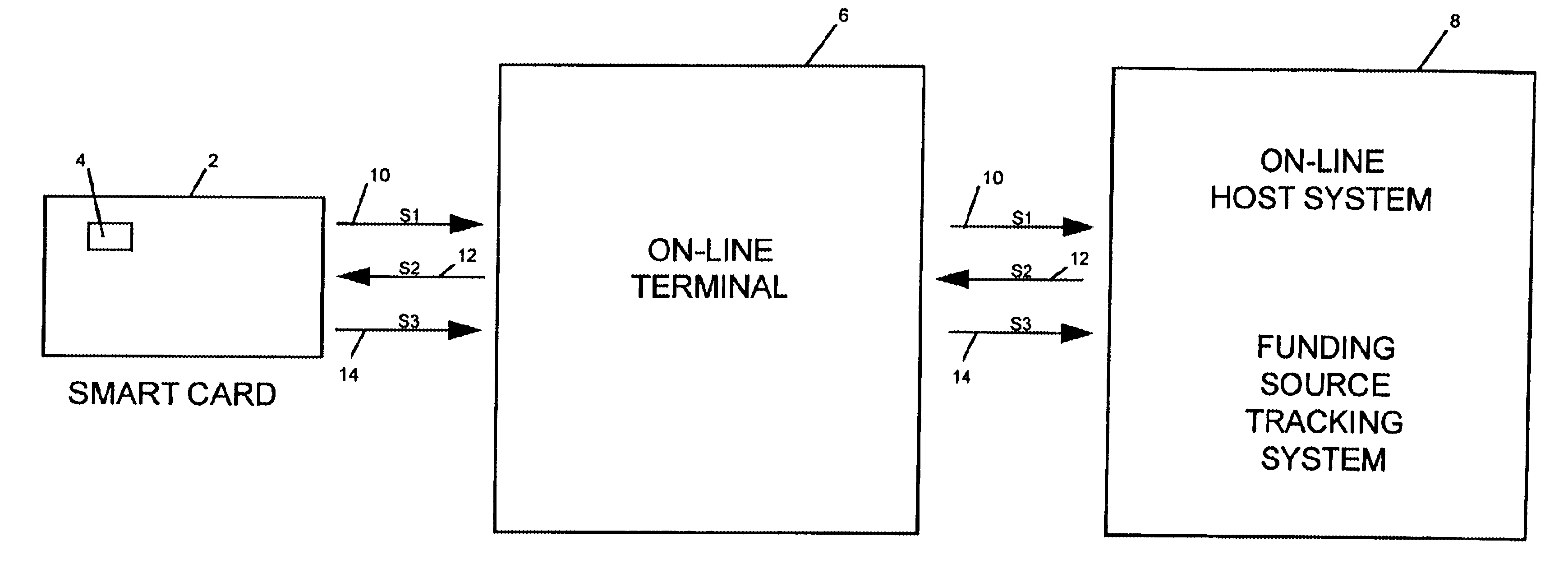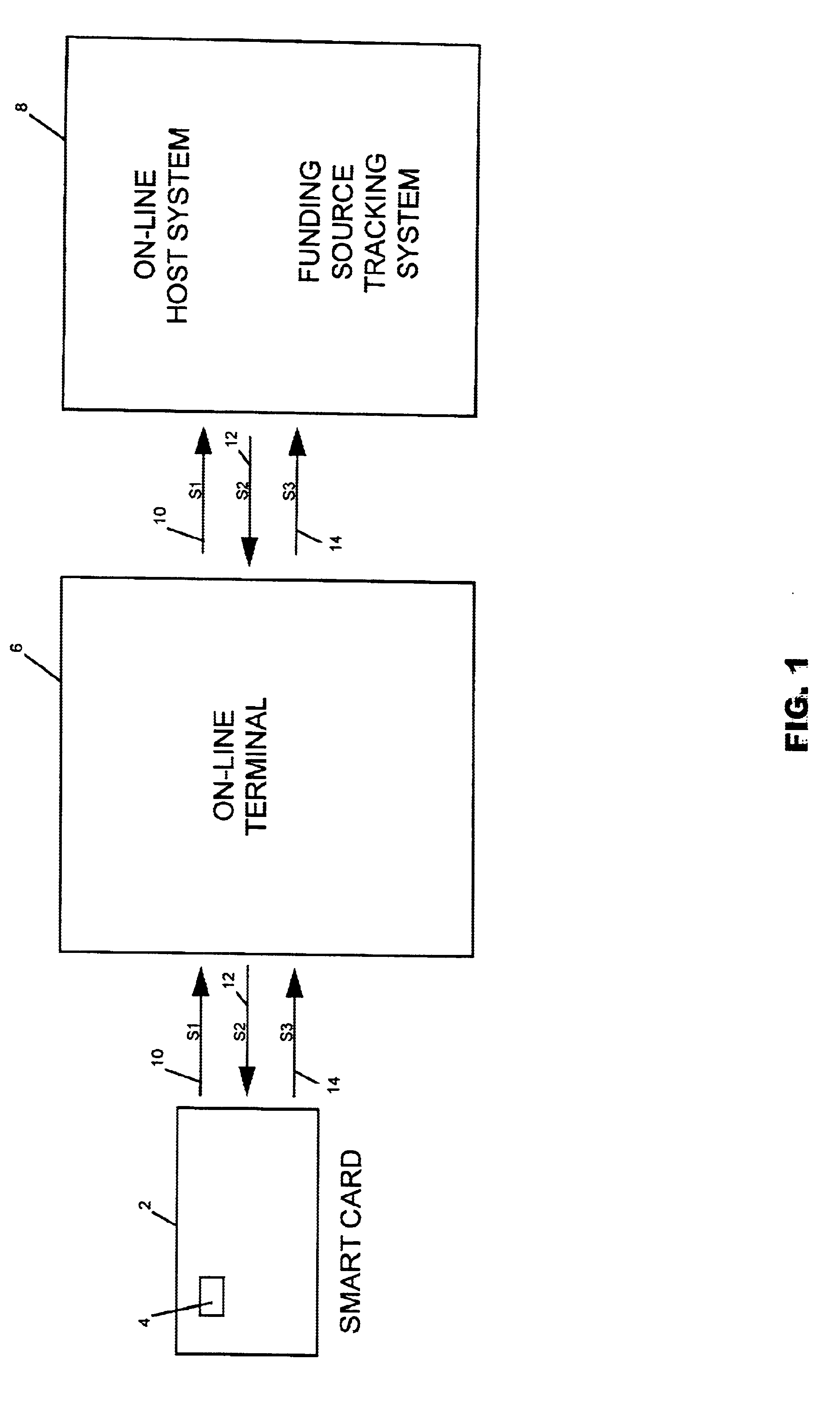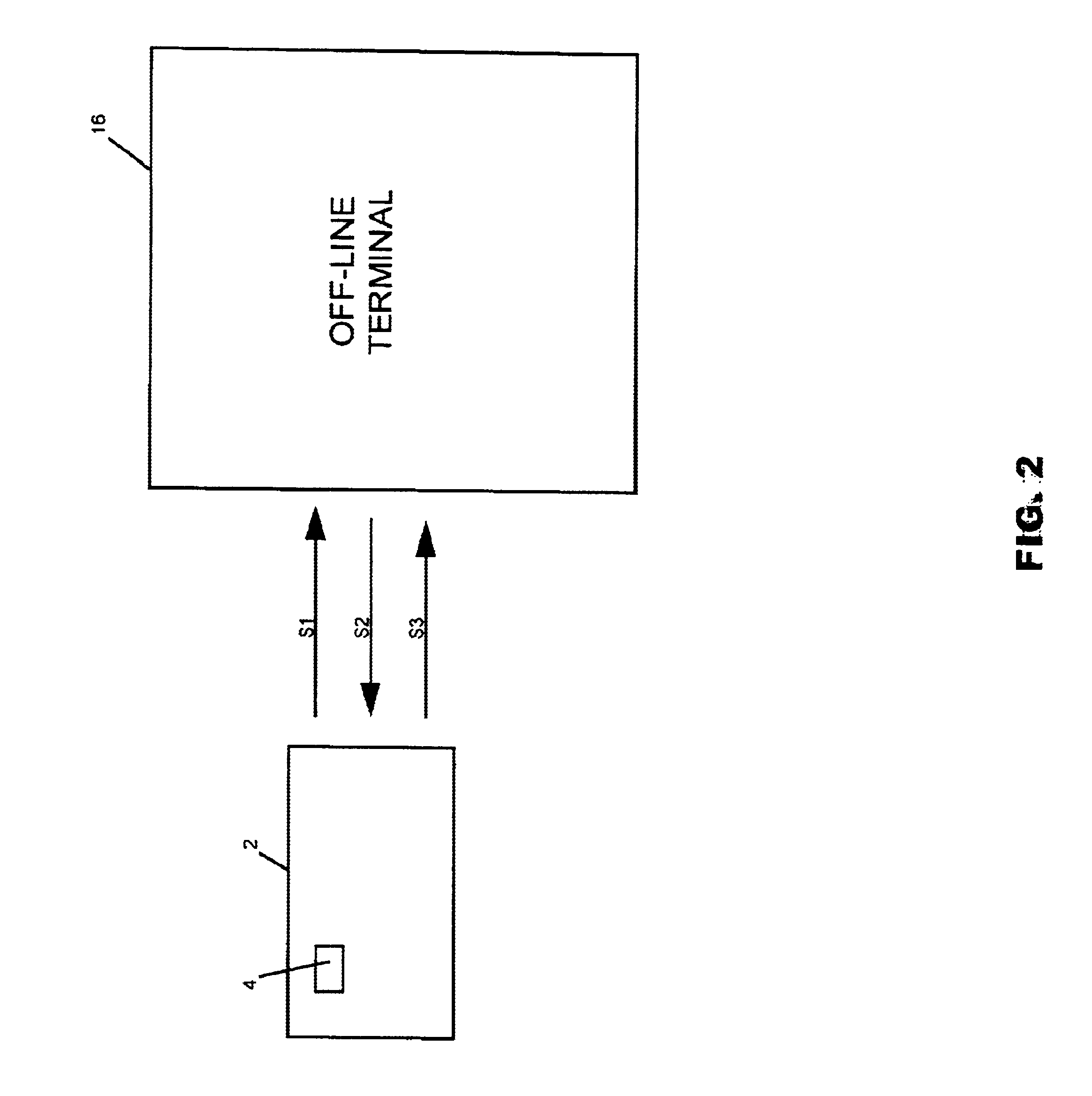Method and system of tracking and providing an audit trail of smart card transactions
a smart card and audit trail technology, applied in the field of stored value smart cards, can solve the problems of unreconciled load transaction memo amount not being accessible by the cardholder, unreconciled load transaction memo amount being likewise unavailable to the cardholder, and the transaction amount represented by the permanent load memo cannot be used by the card holder. , to achieve the effect of reducing the load value balance available, preventing fraud, and reducing the load value balan
- Summary
- Abstract
- Description
- Claims
- Application Information
AI Technical Summary
Benefits of technology
Problems solved by technology
Method used
Image
Examples
Embodiment Construction
[0027]Referring now in detail to an embodiment of the invention, an embodiment of which is illustrated in the accompanying drawings, FIG. 1 is a flow chart which illustrates schematically the key components and flow of information between the key components for a typical on-line transaction with a smart card. Referring to FIG. 1, a smart card 2 embedded with microprocessor chip 4 is inserted into an on-line device, such as terminal 6, connected to a host system 8, and a series of messages are generated between the smart card 2 and the host system 6. A request message 10, known as an S1 message with a secret load key for smart card 2 is transmitted from card 2 to host system 8. Host system 8 receives the message, authenticates the load key, confirms a funding source, and transmits an authorizing message 12 known as an S2 message, to card 2. In response to the S2 message, the smart card 2, returns a load confirmation message 14, known as an S3 message to host system 8. Generally, the ...
PUM
 Login to View More
Login to View More Abstract
Description
Claims
Application Information
 Login to View More
Login to View More - R&D
- Intellectual Property
- Life Sciences
- Materials
- Tech Scout
- Unparalleled Data Quality
- Higher Quality Content
- 60% Fewer Hallucinations
Browse by: Latest US Patents, China's latest patents, Technical Efficacy Thesaurus, Application Domain, Technology Topic, Popular Technical Reports.
© 2025 PatSnap. All rights reserved.Legal|Privacy policy|Modern Slavery Act Transparency Statement|Sitemap|About US| Contact US: help@patsnap.com



